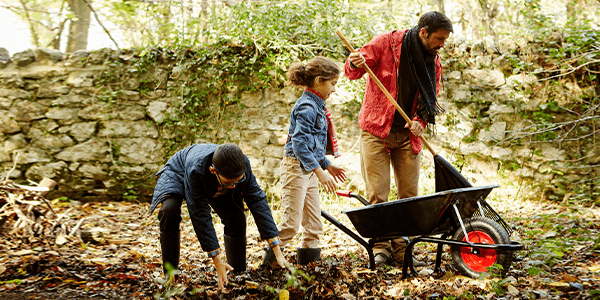Prepare your home for wildfire season


Fire preparedness and prevention is as important as ever. With summer and fire season upon us again, it’s as good a time as any to revisit your own fire safety plan.
In our homes, there are small and large adjustments we can make to strengthen our defense against potential fire damage, and help give you enough time to get out in case of an emergency.
The biggest fire threats to your home
In wildfire scenarios, the most common way that homes ignite is by embers and small flames. These are usually caused by burning pieces of wood, debris or vegetation floating through the air, which can sometimes be carried more than a mile with the help of strong winds. To minimize the risk of your home becoming a hot zone surrounded by burning embers, pay attention to the area up to 200 feet away from the foundation of your home. This is called the Home Ignition Zone, and it can be broken down into three sections.
Immediate zone
This is the area that includes your home and anything else that is between 0 and 5 feet away from the exterior of your home. To keep this area fire safe, make sure you regularly sweep roofs and gutters, and clear any debris from windows or decks. Remember that combustible debris can also build up in attics, chimneys and around the base of your home, so be sure to clear potentially flammable items away from your home’s exterior.
Intermediate zone
This area includes anything between roughly 5 and 30 feet from your home, and is where you commonly find driveways, lawns, patios and other landscaping. Believe it or not, keeping your lawn regularly trimmed or cut is a great start for keeping this area fire safe, so make sure to cut the grass! Also, if you have a cluster of trees or shrubs in your lawn, try to clear vegetation (dead or low hanging branches, leaves, weeds, etc.) so that it doesn’t crowd your trees or shrubs, and doesn’t encroach on your home.
Extended zone
The goal for this area, which extends from 30 to 200 feet away from your home, is not necessarily to eliminate fire. In a wildfire scenario, there is just too much unpredictability beyond your control. Instead of eliminating fire risk in this area, focus on interrupting the fire’s path and keeping flames smaller and near the ground. That means getting rid of any heavy build-up of ground litter or debris, and removing dead plants and trees. If you have any outbuildings, like sheds or greenhouses, make sure these buildings also have vegetation cleared from around them.
Finally, discuss (and practice!) an action plan ahead of time, in case you ever need to evacuate. Make sure you know at least two ways out of your neighborhood, and have a pre-determined meet-up spot for any friends or family members in case cell phone communication is unavailable during a fire. Develop your exit plan and include details for handling any family pets or livestock in the process. And most importantly, always evacuate if you ever feel unsafe staying in your home. Don’t wait until an emergency notification arrives if you already feel threatened by fire.
For more tips on how to prevent fire ahead of wildfire season, and for what to do if you find yourself at risk of a wildfire, the National Fire Protection Association has a hub of online resources to help you get and stay prepared. First Tech Insurance Services is also here to help you feel confident that your home is properly insured in the event of a wildfire. Speak with an agent to learn more about your coverage options.